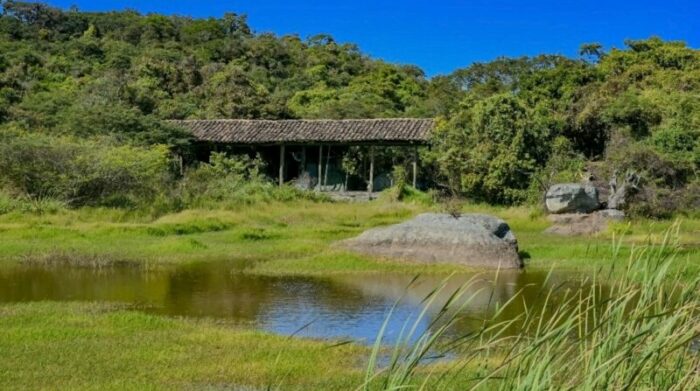‘Sowing water’ in dry areas: inspiration from a pre-Inca practice
The idea that nature can offer solutions to our problems isn’t exactly new. Today, we call them “nature-based solutions” or refer to “ecosystem services”, but for centuries — even millennia — many communities have lived, farmed, and built in ways that reflect this logic. In particular, Indigenous peoples have developed and passed down complex methods to manage water, soils, and forests, grounded in a deep understanding of their territories.
In southern Ecuador, one such ancestral solution has resurfaced through the Sembrando Agua – “Sowing Water”- project, implemented in communities from the small town of Catacocha, in Paltas canton. Perched on a plateau beside the Cerro Pisaca, in the foothills of the Andes, this semi-arid mountainous region — with rocky soils and sparse vegetation — experiences intense seasonal rainfall and increasing water stress due to climate change. Just a decade ago, water was simply not enough. Facing this severe drought, Galo Ramón, a historian from the region, helped revive a traditional system for harvesting rainwater — or the “vital liquid,” as it is sometimes referred to in parts of Latin America. As he explained to Mongabay Latam, while studying a 1680 land dispute involving a lagoon, he noticed in an old drawing that the lagoon wasn’t fed by springs, but by rainfall. By digging deeper — talking to elders, studying legends and ancient documents — he discovered that the Palta people, who lived in the region over a thousand years ago in pre-Inca times, had already developed systems to collect and conserve rainwater. Inspired by this ancestral practice, the historian launched the project to “sowing water” in 2005 together with the Fundación Comunidec. Over ten years, through the efforts of local communities, institutions, and international support, they rebuilt 250 artificial lagoons, runoff walls (tajamares), and small reservoirs (pilancones) on the Cerro Pisaca. These structures capture heavy seasonal rains (up to 700 mm in two months), allowing water to slowly infiltrate the ground, recharge aquifers, and remain available year-round — even through long dry periods. The project has also restored native vegetation, strengthened community participation, and contributed to local economic development, as farmers in Paltas have improved their production of maize, peanuts, mangoes, and other vegetables for market sale.
Catacocha’s experience is not an isolated case. In other parts of the world — such as Bolivia’s altiplano, where traditional knowledge of native plants is being used to reduce lake pollution, or in Uganda, where Indigenous weather forecasting methods are being revived — initiatives that blend Indigenous wisdom with modern environmental strategies are emerging. Innovation does not always mean inventing something new; sometimes, it’s about rethinking what already works (or once worked).
Image Credit : Cortesía Municipio de Paltas

